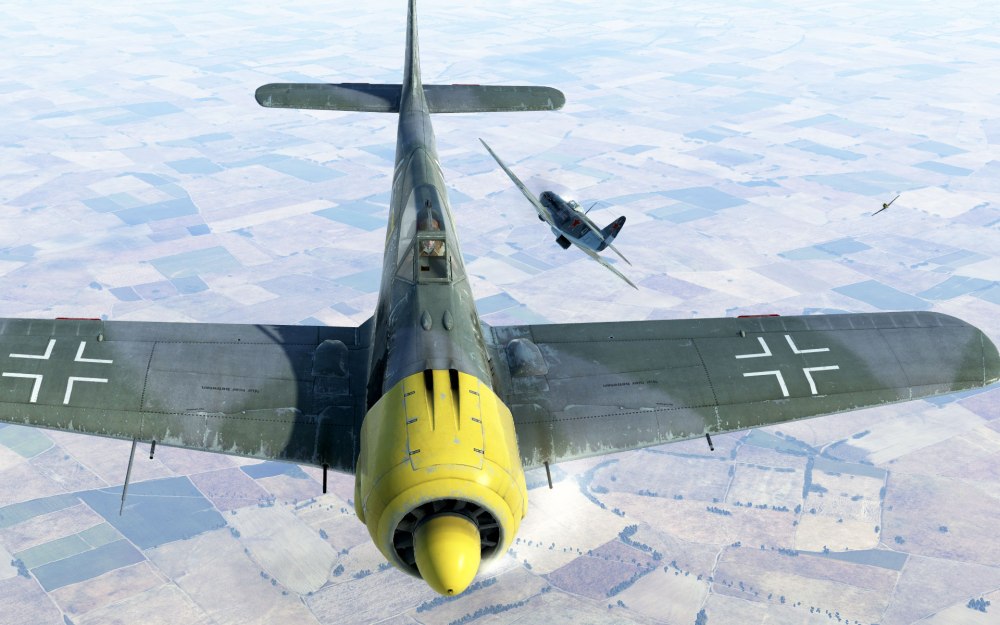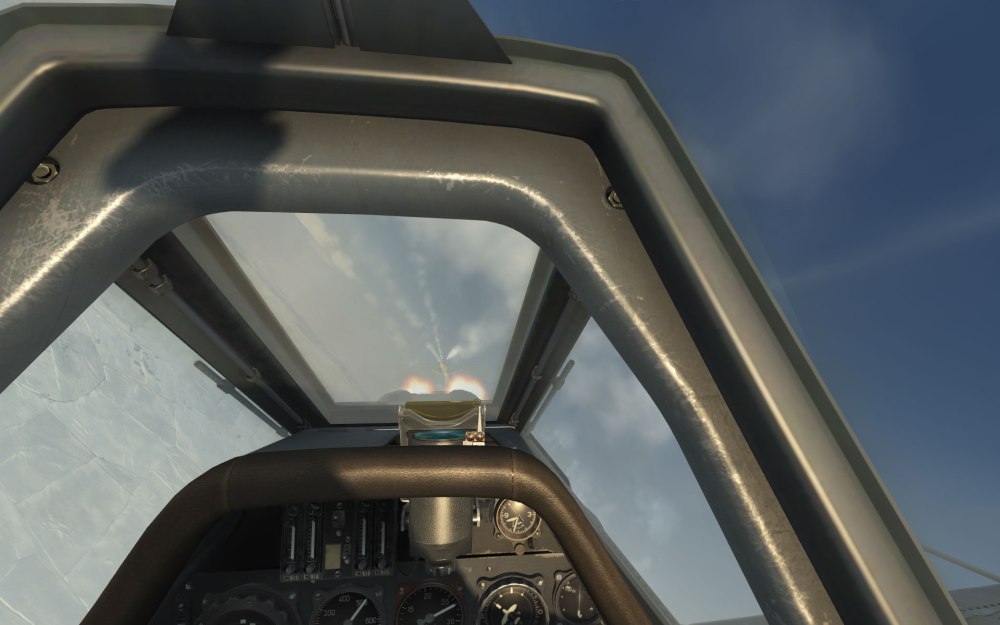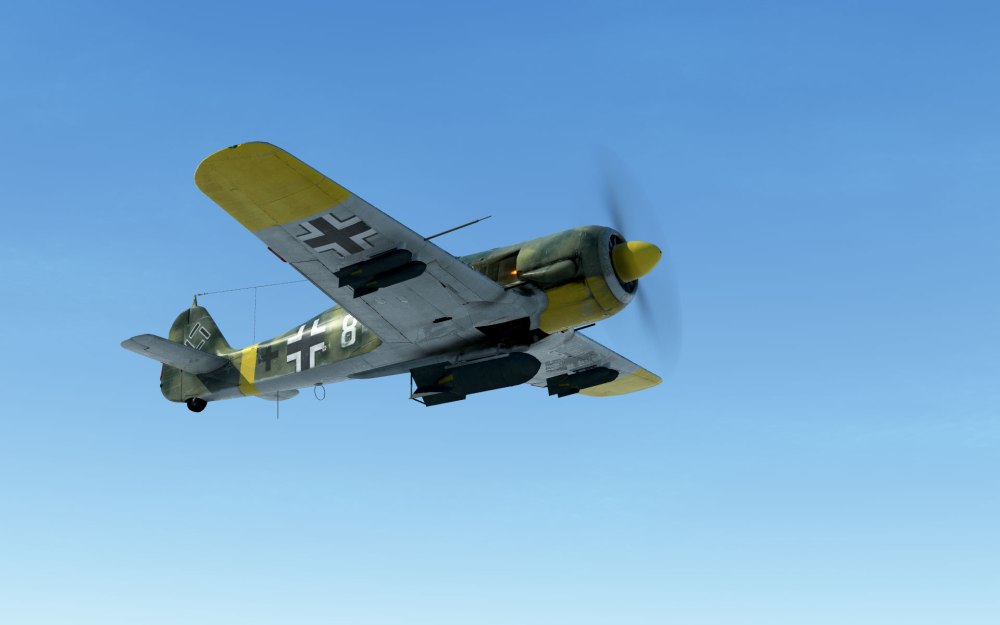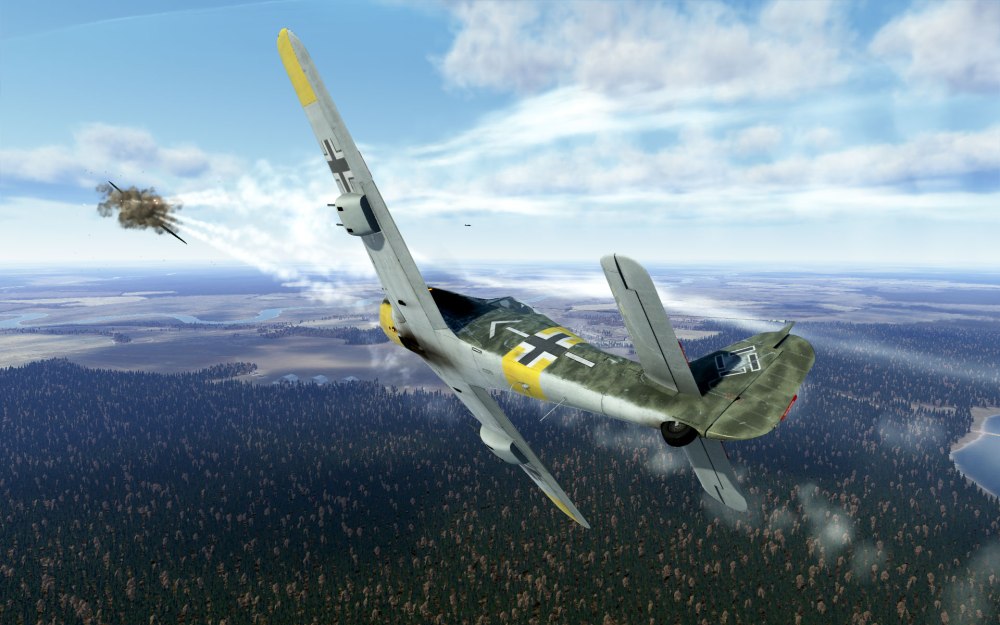The FW190A-5 forms the other half of the legendary Luftwaffe fighter duo of World War II and its come to IL-2: Battle of Kuban. Firepower, crisp handling, and excellent view are all hallmarks of the FW190 series and they are represented well with this aircraft.

Overall performance
Normally I like to pull some of the official stats from the developer notes to fill in some comparison points between common versions, however, with the FW190 the notes don’t seem to fully match the gameplay experience. This may have to do with the recent changes to the FW190s flight model or it may be a series of typos or transpositions. At the moment I don’t feel that the numbers are accurate enough to convey here so I will save the comparison points for another day.
A chart and some comparison points have been posted on the IL-2 forums along with a good discussion so check that out.
In short, the FW190A-5 flies, turns, climbs, dives, and performs similarly to the FW190A-3.
The A-5 is faster than the A-3 model by about 15 to 20 km/h nearly across the board. The exception is the U17 model which has the best top speed at 300 meters (of 568 km/h) before being beaten by the regular A-5 on Emergency power through the rest of the speed range. Keep in mind that the U17 is draggier due to its bomb carriage so this performance is impressive.
Also expect the A-5 to climb more quickly but to turn slightly more slowly than the A-3 due to its weight.
Fear the Wulf!

Kurt Tank’s FW190 was a fighter that was probably a half generation ahead of the Bf109 in terms of its technology with its electrically operated systems, automatic engine controls, and it bucked the trend for European aircraft designers by using a radial engine instead of an inline one. It was fast, powerful, and deadly and it earned its nickname of “Butcherbird.”
The FW190A-5 model is an interesting one as its not only a strong representative of the fighter and interceptor that challenged the best Russian, American, British and Commonwealth (and other Allied) fliers but it also found itself increasingly used in the fighter-bomber and attack duties. It took over from the increasingly vulnerable Ju87 Stuka in many instances.
The A-5 really informs both future fighter models that came after it and the increasingly specialized G and F series of FW190s that were optimized for the ground attack role.
Moving some mud
Though the FW190A-3 already comes with a very good array of ground attack options the A-5 adds a few more. The A-5/U17 is optimized for low level fighter-bomber penetration attacks. The U17 modification can carry the eight bomb configuration or go with a more conventional SC250 or SC500 loadout plus two SC50s on each wing.
Its not just the loadout either. The U17 modification has a 1.65ATA engine boost option that works at low altitudes. This partially negates the draggier bomb carrying setups and gives the FW190A-5 a very fast low altitude top speed while carrying external ordinance.
The U17 modification also adds extra armor so when you’re on that final attack run and exposed to a lot of flak and light machine gun fire you have some extra protection around the engine and along the belly of the aircraft.

Its a real fighter too
The FW190 is a true hunter of an aircraft and the A-5 model is no exception. The FW190 relies on the boom and zoom technique of fighting where the pilot picks a target while maintaining speed or altitude advantage and then booms it at a high rate of speed, firing on the target and then quickly disengaging for another run.
Instead of twisting and turning the 190 can use its roll rate, engine power, aerodynamics, and sound tactics to fly in and out of combat quickly.
Against bombers the FW190 brings an array of two, four or six 20mm cannons which can obliterate enemy bombers and attack planes. Two is sufficient, four is standard fitting for the FW190 and six can be accomplished with the use of a gunpod. Both the Pe-2 and IL-2 are resistant to damage but the FW190s raw power quickly overwhelms both types in my experience. What the FW190 offers is a four cannon installation with negligible penalty (it is the standard fit after all) which cannot be said of the three cannon Bf109 featuring gun pods.

We’ll be seeing a lot of the 190 in IL-2: Battle of Kuban operating both as a fighter, bomber interceptor, and attack plane as it is well suited at all of these roles. Beyond well suited, its near the top of its class for things like speed and overall agility except in horizontal turns. A fighter and fighter-bomber to be respected and feared!
Overall report
Pros
- A powerful hunter with extreme firepower and crisp handling
- Flexibility in air and ground attack modes
- Excellent view to the sides and back
- Easy engine management
Cons
- Not a turn fighter, the 190 looses speed in tight turns quickly
- Slight reduced climb and overall top speed versus the earlier G-2 variant
- Forward view is restricted over the nose








